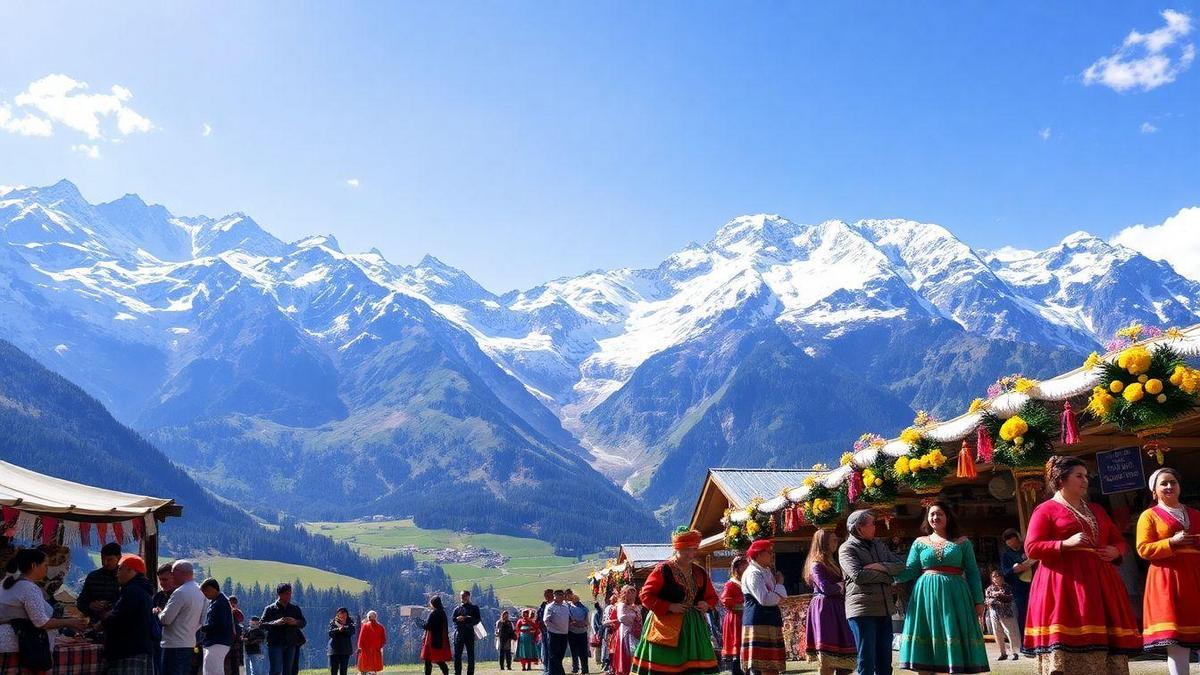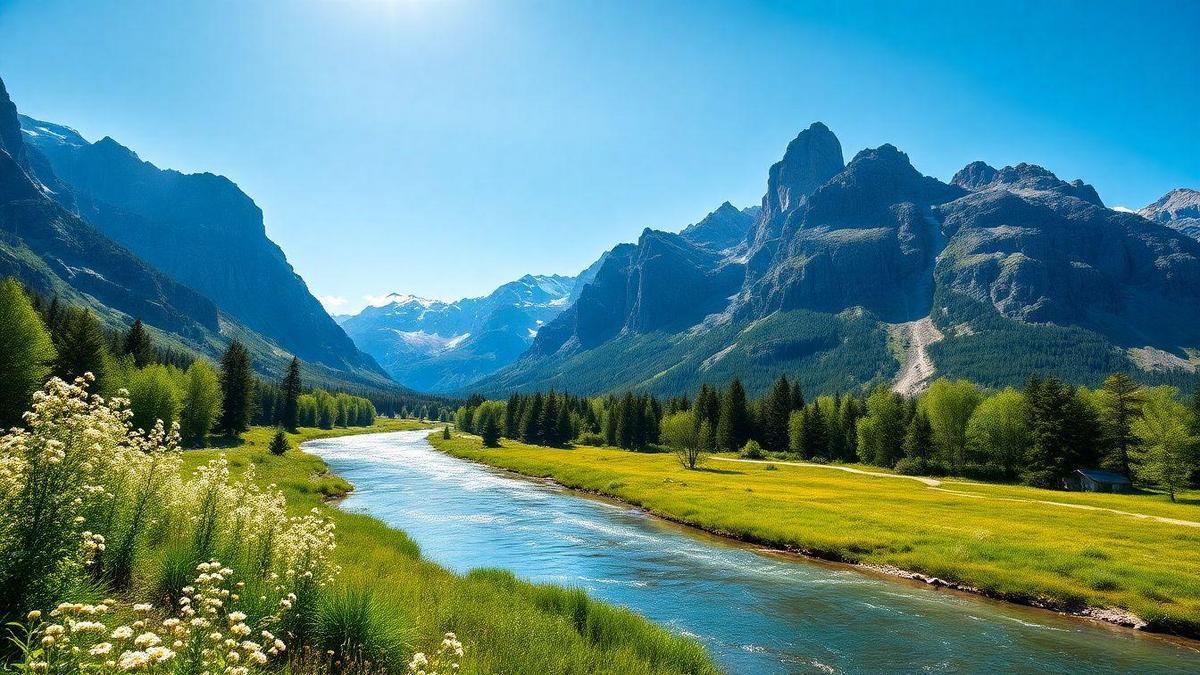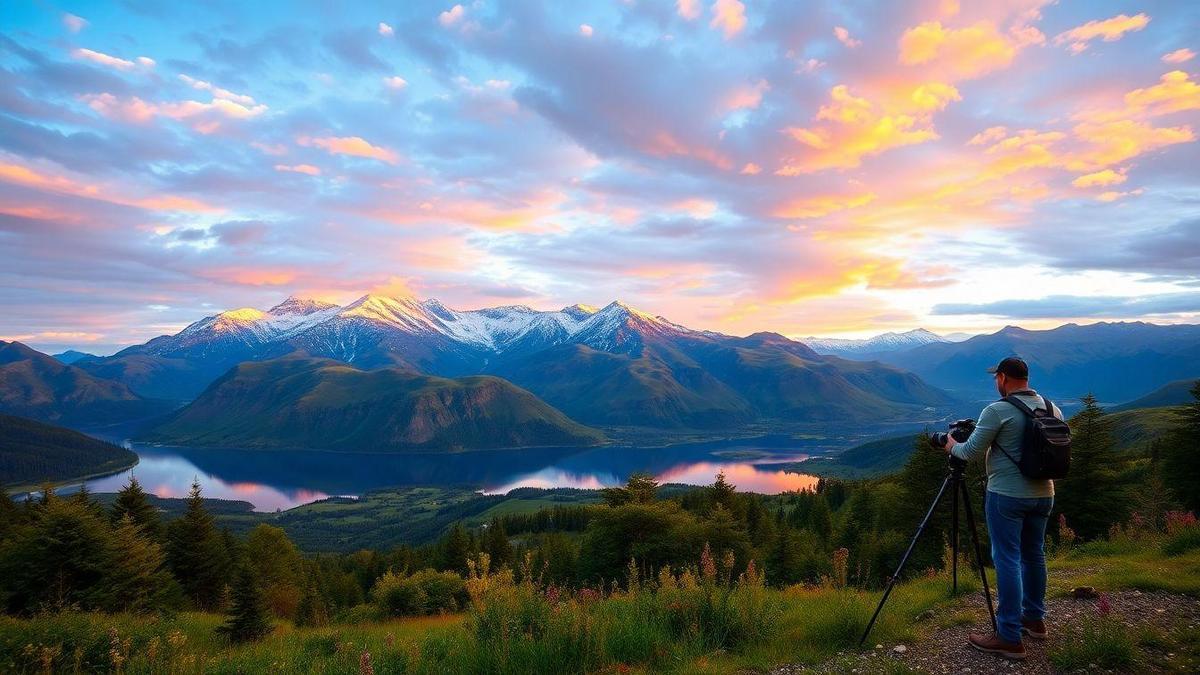
Discovering the Best Mountain Sunset Spots
Top Locations for Mountain Sunset Photography
When you’re on a quest for stunning mountain sunsets, some locations truly stand out. Here are a few spots that are sure to take your breath away:
| Location | Description |
|---|---|
| Rocky Mountain National Park | Known for its towering peaks and vibrant skies, this park is a must-visit. |
| Grand Teton National Park | The Tetons offer a dramatic backdrop for sunset photography, reflecting beautifully in the lakes below. |
| Banff National Park | With its stunning turquoise lakes and majestic mountains, Banff is a photographer’s paradise. |
| Zion National Park | The red rock formations glow during sunset, creating a magical atmosphere. |
These locations are perfect for capturing the magic of sunset. Pack your camera and get ready for some unforgettable moments!
How to Find Scenic Sunset Destinations
Finding the right spots to watch the sunset can be an adventure in itself. Here are some tips to help you discover scenic sunset destinations:
- Research Online: Use social media and travel blogs to find hidden gems. Look for hashtags like #SunsetPhotography and #MountainViews.
- Ask Locals: If you’re visiting a new area, don’t hesitate to chat with locals. They often know the best spots that aren’t in guidebooks.
- Check Weather Apps: Clear skies are essential for a great sunset. Use weather apps to find the best days for photography.
By following these steps, you can uncover amazing sunset locations that will leave you in awe.
Tips for Choosing Ideal Photography Locations
When it comes to selecting the ideal photography locations for capturing stunning mountain landscapes at sunset, consider these handy tips:
- Elevation: Higher vantage points often provide better views of the horizon.
- Foreground: Look for interesting elements like trees, rocks, or lakes to add depth to your photos.
- Timing: Arrive early to set up your shot and enjoy the changing colors as the sun sets.
By keeping these tips in mind, you’ll be well on your way to snapping breathtaking photos of those magical moments.
Timing Your Photography for Golden Hour
Understanding the Golden Hour in the Mountains
When you think about capturing the beauty of mountains, timing is everything. The Golden Hour is that magical time just after sunrise and just before sunset. During this period, the sunlight is soft and warm, giving everything a golden glow. Imagine standing on a mountain peak, watching the sun dip below the horizon, painting the sky with shades of orange, pink, and purple. It’s a sight that can take your breath away.
Best Times to Capture Stunning Mountain Views
To catch the best views, you need to know the exact times for the Golden Hour in your chosen location. Here’s a simple table to help you plan:
| Location | Sunrise | Sunset |
|---|---|---|
| Rocky Mountains | 6:30 AM | 7:45 PM |
| Appalachian Mountains | 6:00 AM | 7:30 PM |
| Sierra Nevada | 6:15 AM | 7:50 PM |
Make sure to arrive early! This gives you time to set up your camera and soak in the surroundings. You don’t want to rush and miss that perfect shot.
How Light Affects Your Mountain Photography
The light during the Golden Hour can make or break your photos. Here’s how it impacts your shots:
- Soft Shadows: The light creates gentle shadows that add depth to your images.
- Vibrant Colors: The warm hues enhance the colors of the mountains and sky.
- Contrast: The low angle of the sun creates striking contrasts, making your photos pop.
As you take your shots, pay attention to how the light changes. It can be like a painter, brushing different colors across the canvas of the sky and mountains.
Essential Gear for Mountain Sunset Photography
Must-Have Equipment for Landscape Photography
When you’re out capturing those breathtaking mountain sunsets, having the right equipment is key. Here’s a list of must-have items that will help you snap those stunning shots:
- Camera: A DSLR or mirrorless camera is perfect for capturing high-quality images.
- Lenses: A wide-angle lens is great for landscapes, while a telephoto lens can help you zoom in on distant peaks.
- Tripod: A sturdy tripod keeps your camera steady, especially during low light.
- Filters: ND filters can help manage bright light, while polarizing filters reduce glare from water.
Accessories to Enhance Your Outdoor Photography
Don’t forget about those handy accessories that can make a big difference in your photos:
- Extra Batteries: Always bring spares; you don’t want to miss a sunset because your battery died!
- Memory Cards: Have multiple cards on hand to store all your beautiful shots.
- Lens Cleaning Kit: Dust can ruin a picture, so keep your lens clean.
- Remote Shutter Release: This helps avoid camera shake when taking photos.
Choosing the Right Camera for Stunning Shots
Selecting the right camera is crucial for capturing those magical moments. Here’s a simple comparison table to help you decide:
| Camera Type | Pros | Cons |
|---|---|---|
| DSLR | High image quality | Bulkier and heavier |
| Mirrorless | Lightweight, compact | Battery life can be short |
| Point & Shoot | Easy to use | Limited control over settings |
With the right gear and accessories, you’re all set to explore ideal photography locations for capturing stunning mountain landscapes at sunset. Your adventure awaits, and those beautiful shots are just a click away!
Techniques for Capturing Stunning Mountain Landscapes
Composition Tips for Sunset Photography
Capturing the beauty of mountains at sunset can feel like magic. Here are some simple tips to help you create stunning photos:
- Rule of Thirds: Imagine your photo divided into a grid of nine squares. Place the horizon along one of the lines or at the intersections. This makes your picture more interesting.
- Foreground Interest: Add something in the front of your photo, like rocks or flowers. This draws the eye in and creates depth.
- Leading Lines: Use paths, rivers, or fences to guide the viewer’s eye through the image. This helps tell a story.
- Golden Hour: The best time to take photos is during the golden hour, just before sunset. The light is soft and warm, making everything look beautiful.
Using Filters to Improve Your Mountain Shots
Filters can be your best friends when taking photos of mountains. Here’s how they can help:
| Filter Type | Benefits |
|---|---|
| Polarizing Filter | Reduces glare and makes colors pop. |
| ND (Neutral Density) | Allows you to use longer exposures for dreamy effects. |
| UV Filter | Protects your lens from dust and scratches. |
Using a polarizing filter can make the sky bluer and the clouds whiter. This adds a dramatic touch to your photos. An ND filter is great for softening flowing water or creating a misty look around waterfalls.
The Importance of Angles in Landscape Photography
Finding the right angle is key to taking breathtaking mountain photos. Here are some helpful hints:
- Get Low: Try crouching down. This gives a different perspective and can make your photo feel more powerful.
- Climb Higher: If safe, find a higher spot. A bird’s-eye view can show the vastness of the landscape.
- Experiment: Don’t be afraid to move around and try different angles. Sometimes the best shot comes from a surprising place.
Planning Your Trip for Ideal Photography Locations
Researching Scenic Sunset Destinations
When you’re planning your trip, researching scenic sunset destinations is crucial. Think about places where mountains meet rivers. These spots can create breathtaking views. Use online resources like travel blogs, photography websites, and social media platforms. Look for places with stunning landscapes and reviews from other photographers. You can also check out local tourism sites for recommendations.
Here’s a simple table to help you organize your findings:
| Destination | Notable Features | Best Viewing Spots |
|---|---|---|
| Rocky Mountain NP | Majestic peaks | Bear Lake, Trail Ridge |
| Yosemite NP | Iconic cliffs | Glacier Point, Tunnel View |
| Grand Canyon | Deep canyons | Mather Point, Yavapai |
Best Times of Year for Mountain Sunset Photography
Timing can make or break your photography adventure. The best times of year for mountain sunset photography are typically late spring and early fall. During these seasons, the weather is often clear, and the colors of the sunset are vibrant.
- Late Spring: Wildflowers bloom, adding color to your shots.
- Early Fall: Leaves change color, creating a stunning backdrop.
Plan your trip around these seasons for the best results. Each sunset can bring a different mood, so be ready to capture those moments.
Safety Tips for Outdoor Photography Adventures
While you’re out capturing those beautiful landscapes, safety should always come first. Here are a few safety tips to keep in mind:
- Stay Hydrated: Always carry enough water, especially if you’re hiking.
- Dress Appropriately: Wear layers to adjust to changing temperatures.
- Know Your Limits: Don’t push yourself too hard. Take breaks when needed.
- Check Weather Conditions: Always be aware of the weather forecast.
By following these tips, you can focus on enjoying your photography adventure without unnecessary worries.
Sharing Your Mountain Sunset Photography
Best Platforms for Showcasing Your Work
When you capture those breathtaking moments in the mountains, you want to share them with the world. Social media is a fantastic place to start. Here are some of the best platforms you can use:
| Platform | Description |
|---|---|
| Great for visual content; use hashtags to reach a wider audience. | |
| Flickr | A community of photographers; perfect for sharing high-quality images. |
| 500px | Designed for photographers; you can gain exposure and feedback. |
| Ideal for sharing your work and driving traffic to your blog or website. |
Each of these platforms offers a unique way to connect with others who share your passion for photography. So, choose the one that feels right for you and start showcasing your stunning mountain landscapes at sunset!
Engaging with Other Nature Photography Enthusiasts
Connecting with fellow photographers can be rewarding. Join groups on Facebook or Reddit where you can share your work and get feedback. Comment on others’ photos, and don’t hesitate to ask for tips. Remember, everyone was once a beginner!
You might find inspiration in their work, and they might appreciate your unique perspective. Building a community can help you grow as a photographer and keep your passion alive.
How to Create a Portfolio of Your Best Shots
Creating a portfolio is like building a storybook of your photography journey. Here’s how to get started:
- Select Your Best Work: Choose the photos that truly represent your style. Aim for variety—include different landscapes, lighting conditions, and compositions.
- Organize by Theme: Group your photos into categories, like “Mountain Sunsets” or “Rivers at Dusk”. This helps viewers navigate your collection easily.
- Use a Simple Design: Keep your portfolio clean and easy to read. Too much clutter can distract from your beautiful images.
Your portfolio is a reflection of your journey in photography. Make it personal and let your passion shine through!
Frequently Asked Questions
What are the best mountain locations for sunset photography?
Some of the ideal photography locations for capturing stunning mountain landscapes at sunset include Rocky Mountain National Park, the Grand Tetons, and the Swiss Alps. Each offers breathtaking views and vibrant colors.
When is the best time to photograph sunsets in the mountains?
The golden hour, just before sunset, is the perfect time. Arrive early to get set up and catch those beautiful colors as the sun goes down.
Do I need special equipment for mountain sunset photography?
A good camera and a tripod are key. You might also consider a polarizer lens for clearer colors. Bring extra batteries, too!
How can I find hidden gems for sunset photography in the mountains?
Research online or ask local photographers for tips. National parks often have lesser-known trails worth exploring. For unique experiences, consider seeking out hidden gems near mountain rivers.
What should I consider when choosing a location for sunset shots?
Look for spots with a clear view of the horizon. Check the weather and pick a day with few clouds for the best colors. Remember, safety first! Also, consider visiting during the best times of year for mountain photography for optimal conditions.


